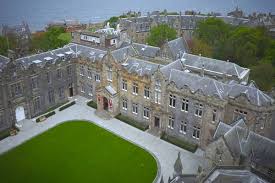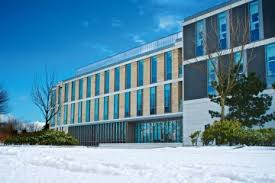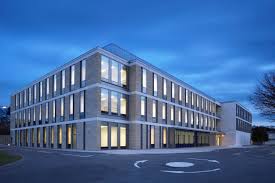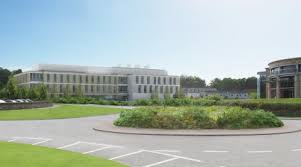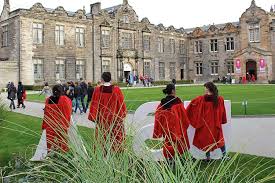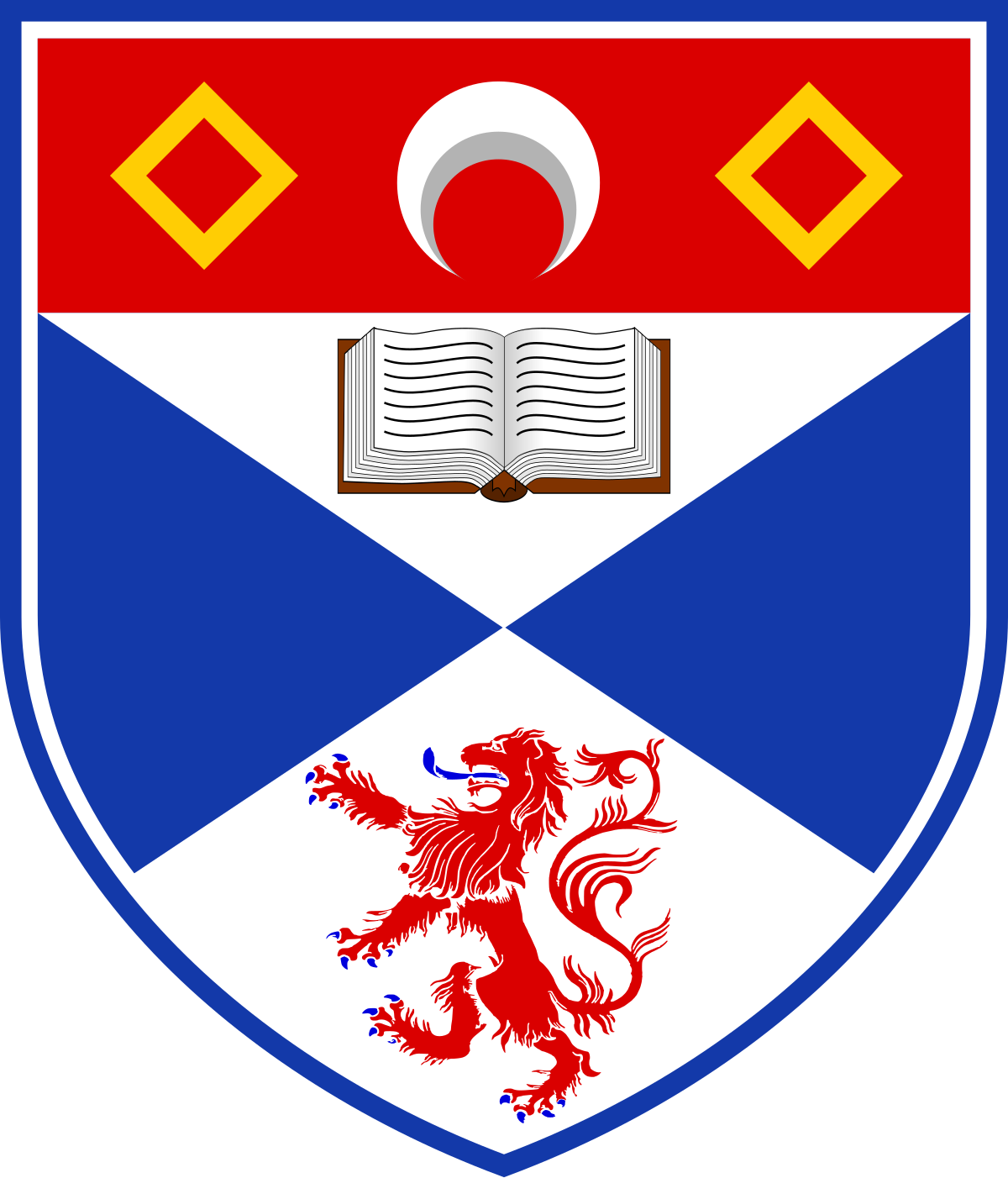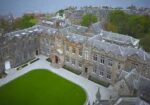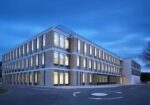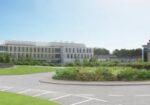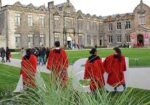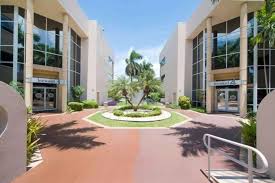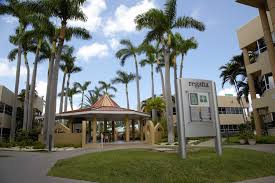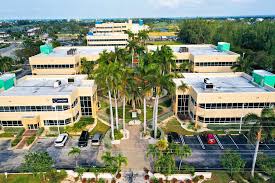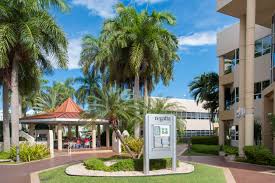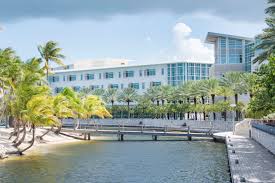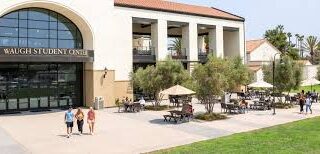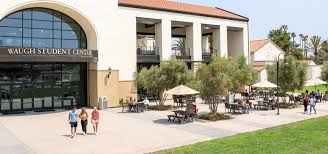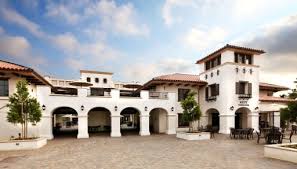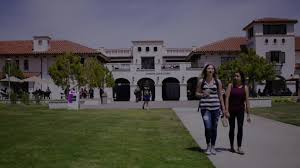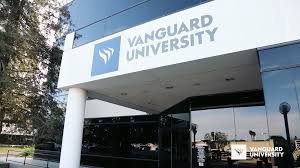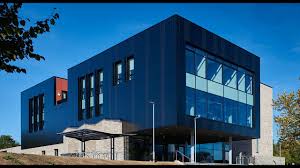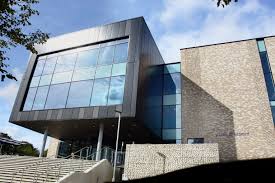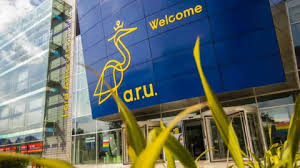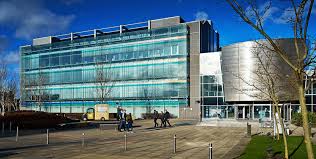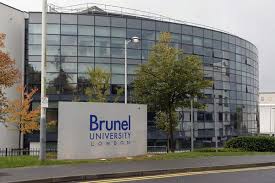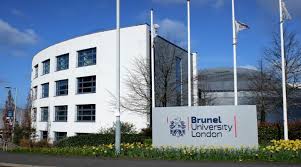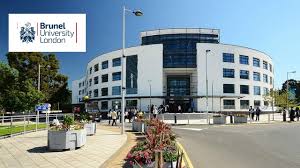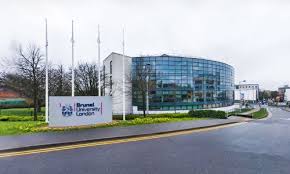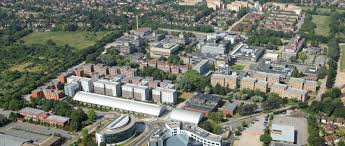University of St. Andrews School of Medicine The School of Medicine of the University of St Andrews is a rich and intriguing history that mirrors both medieval Scotland’s political struggles and academic aspirations. Throughout the Middle Ages, Scottish students were forced to seek their tertiary education outside of Scotland because Scotland lacked a national university. By 1410, some of them, having studied in the past at Oxford and Cambridge, had been forced to Paris because of the persistent Wars of Scottish Independence against England.
About University of St. Andrews School of Medicine
The situation changed a bit with a new challenge developing from the splitting of the Catholic Church into two competing popes—Pope Boniface IX, who had French support, and Pope Benedict XIII, with whom Scotland sympathized. Scottish students studying at Paris found themselves in a tenuous position between this ecclesiastical cleavage. Scotland was found to require its own center of higher learning. St Andrews, where Scotland’s most senior bishopric lay and which was a famous monastic center of learning, was a likely candidate. In May 1410, a batch of scholars, many of whom were graduates of the University of Paris, founded a school of higher learning in the town.
University of St. Andrews School of Medicine – Table of Contents
- About
- Advantages
- Ranking
- Departments And Course Duration
- Facilities And Infrastructure
- Required Documents
- Eligibility Criteria
- Admission Process
- Benefits
- Privileges And Benefits for Indian Students
- FAQ’s
By February 1411, the young institution was granted a charter of incorporation and privileges by Bishop Henry Wardlaw of St Andrews, formally recognizing the group as a valid and safeguarded corporation devoted to learning. But only the Pope or Holy Roman Emperor could grant full university status and the power to award degrees. Bishop Wardlaw had requested papal approbation from Pope Benedict XIII, who, in appreciation for Scotland’s loyalty during his time of exile, consented to grant the university full university status.
Pope Benedict XIII issued six papal bulls on August 28, 1413, from his refuge in Peniscola, Spain—one of which, the approbation of Wardlaw’s charter, still exists today in the University’s museum. These bulls came to St Andrews in February 1414, preceded by general rejoicing throughout the town, with bells clanging, bonfires burning, and great rejoicing.

University of St. Andrews School of Medicine Accreditations, Affiliations, Recognitions
Although its early life was marked by auspicious beginnings, the University’s early years were troubled by several disturbances. In 1426, King James I tried to move the University to Perth. In 1470, riotous disorders resulted in the expulsion of students and professors who had assaulted the Dean with bows and arrows. In 1544, University officials had prohibited beards, gaming, football, and carrying arms in order to impose discipline. By the mid-16th century, the University had grown to have three constituent colleges: St Salvator’s (founded in 1450), St Leonard’s (1511), and St Mary’s (1538). St Salvator’s Chapel and St Mary’s College buildings, still in existence today, date back to this period.
Between the 1500s and 1700s, the University had alternating phases of prosperity and hardship. In this period, St Salvator’s and St Leonard’s Colleges combined to create the United College, which still exists today in its enlarged capacity. During the 19th century, massive breakthroughs had been made across the arts, divinity, and sciences. In 1897, University extended its knowledge base through affiliation with a newly opened center at neighboring Dundee, resulting in crucial advances of medical and applied sciences. That partnership continued right up to the point when in 1967 the University of Dundee split away as a distinct institution.
The 1980s were a revolutionising time for St Andrews, with it undertaking huge investments in building its research facilities, and enormously enhancing its position as a worldwide research-led university. It caused history in 2009 when it welcomed its first-ever female Principal, Harvard’s Radcliffe Institute’s Professor Louise Richardson. She was followed in 2016 by Professor Sally Mapstone. Marking more than 600 years of uninterrupted scholarly distinction, the University of St Andrews continues to leave its mark on Scotland’s intellectual and cultural heritage as well as the world.
Advantages of Studying in University of St. Andrews School of Medicine
Academic Excellence
- Strong Academic Foundations: The School offers a solid grounding in the basic sciences, effectively preparing students for the challenges of clinical practice.
- Integrated Curriculum: A well-structured curriculum combines foundational science with clinical learning, enabling students to apply theoretical knowledge to real-world healthcare scenarios.
- Early Clinical Exposure: From the first year, students are introduced to clinical environments through placements and simulated wards, fostering hands-on experience and patient communication skills.
- Research Opportunities: A vibrant research culture encourages students to participate in various research projects throughout their academic journey.
- Dedicated Faculty: Teaching is led by passionate educators who prioritize student learning, often balancing teaching responsibilities with ongoing research work.
World-Class Facilities
- Advanced Teaching Infrastructure: The Medical School features cutting-edge facilities, including a fully equipped dissecting room and technological tools for interactive learning.
Supportive Student Environment
- Small Class Sizes: With a student-to-staff ratio of approximately 12:1, students benefit from personalized instruction and stronger engagement with faculty.
- Accessible Support Services: Academic and pastoral support systems are easily accessible, ensuring students receive help when needed.
- Safe and Scenic Location: Set in a picturesque coastal town, St Andrews offers a peaceful and inspiring setting ideal for study and personal growth.
- Active Student Life: With over 140 societies and 50 sports clubs, students enjoy a dynamic and socially enriching campus life.
- High Student Satisfaction: The university consistently ranks highly in student satisfaction surveys, reflecting its commitment to delivering a fulfilling student experience.
- Unique Traditions: Rich in history, the university offers a variety of unique traditions that add to the sense of community and belonging.
Career Prospects
- Recognized Medical Qualification: Upon completion, students earn an MBChB degree, qualifying them for the UK Foundation Programme and entry into any medical specialty.
- Diverse Specialization Options: Graduates can pursue careers in more than 60 medical specialties, both within the UK and internationally.
- Career Guidance Services: The Careers Centre provides tailored one-to-one guidance, workshops, and events to help students enhance their employability and career readiness.
Latest Notifications:
University of St. Andrews School of Medicine Ranking
The University of St Andrews School of Medicine, regularly ranked among the top UK and global medical schools for academic excellence, has evolved over the years to meet the changing needs of medical education and research. The School relocated to a modern, purpose-built building on the science campus at North Haugh in 2010.
This contemporary building was specially commissioned to meet the School’s newly reorganized curriculum, which addresses the GMC’s expectations and guidelines for future undergraduate medical education. The School is very much focused on multidisciplinary and team-based approaches, which have been instrumental in the success of its medical research activities. Existing research activity covers a broad spectrum of domains, from cellular medicine to infection and global health, population and behavioral sciences, and medical education, with ongoing activity to expand and strengthen these programmes further.
Within the Medical School building, state-of-the-art research facilities offer an outstanding academic environment and the infrastructure required to underpin the sustained expansion and excellence of medical research at St Andrews. One of the unique strengths of the School of Medicine is its special degree pathway, permitting students to gain a Bachelor of Science (BSc) Honours degree in Medicine after three years, and then progress on to one of the University’s associated medical schools to achieve the final three years of clinical experience and obtain a Bachelor of Medicine, Bachelor of Surgery (MB ChB or MBBS) degree.
The School also provides a graduate entry medicine programme, ScotGEM, in partnership with the University of Dundee, NHS Scotland, and the University of the Highlands and Islands. This four-year programme aims to develop proficient generalist practitioners with a special focus on rural medicine, serving the particular requirements of NHS Scotland and providing affordable, high-quality care to varied communities.
Departments And Course Duration in University of St. Andrews School of Medicine
MBBS Equivalent Program at the University of St Andrews School of Medicine
At St Andrews, the medical degree program does not follow the traditional “MBBS” structure. Instead, it is a three-phase program that eventually leads to an MBChB (Bachelor of Medicine, Bachelor of Surgery) degree — the UK equivalent of an MBBS.
Course Duration and Structure
The medical course at St Andrews spans six years, divided into two main parts:
1. BSc (Hons) Medicine – Years 1 to 3 (St Andrews)
- Students spend the first three years at the University of St Andrews.
- They graduate with a Bachelor of Science Honours (BSc Hons) in Medicine.
- These years focus on:
- Basic sciences (anatomy, physiology, biochemistry)
- Clinical skills training
- Health psychology
- Early patient contact
- Research and evidence-based medicine
2. MBChB/MBBS – Years 4 to 6 (Partner Medical Schools)
- After three years, students transfer to a partner medical school to complete their clinical training.
- Partner institutions include:
- University of Manchester
- University of Glasgow
- University of Edinburgh
- Barts and The London School of Medicine and Dentistry (Queen Mary University of London) and others.
- Students complete their clinical placements in hospital and community settings and graduate with an MBChB or MBBS, depending on the partner institution.
Graduate Entry Option (ScotGEM)
- A unique 4-year graduate entry program, ScotGEM, is available.
- Offered in collaboration with:
- University of Dundee
- NHS Scotland
- University of the Highlands and Islands
- It focuses on generalist and rural medicine to support the needs of NHS Scotland.
Departments at the School of Medicine
The School of Medicine at St Andrews operates through interdisciplinary research and teaching divisions, including:
Cellular Medicine
- Focuses on genetics, molecular biology, and immunology.
- Supports research into cancer, regenerative medicine, and ageing.
Infection and Global Health
- Covers public health, infectious disease research, epidemiology, and global health challenges.
Population and Behavioural Science
- Examines the psychological, behavioral, and societal aspects of health and illness.
- Key areas: health inequalities, health behavior, medical ethics.
Medical Education
- Develops innovative teaching methods.
- Research in curriculum development, assessment, and professional education.
Latest Updates:
Facilities And Infrastructure in University of St. Andrews School of Medicine
Infrastructure
Student Accommodation
Early accommodation was provided in university halls close to the main campus, with basic but cozy facilities like shared kitchens, common rooms, and study spaces.
Early Labs and Libraries:
The early labs dealt with anatomy, physiology, and biochemistry. The library facilitated learning with a vast collection of medical books and anatomical models, laying a sound basis in basic medical sciences.
Expansion and Modernization
Campus Growth:
The School of Medicine relocated to a specially designed building at North Haugh in 2010. The development involved new lecture theatres, seminar rooms, and modern laboratory facilities.
Technological Upgrades:
Implementation of digital learning systems, computer laboratories, fast internet, and an electronic library has greatly improved access to academics and learning.
Clinical Training Facilities:
Clinical skills suites with simulation rooms, mock wards, and standardized patient programs were added. Partnerships with NHS hospitals provide real-world clinical experience from the program’s early years.
Improving Student Life
Student Activity & Recreation Centers:
Creation of dedicated student spaces, sports halls, gyms, and wellness facilities has enhanced the non-academic experience.
Cafeteria and Dining:
Meals have been upgraded to feature multicultural and health-based meal options, with convenient cafes and dining halls situated strategically around the campus.
Improvements in Accommodation:
Residential student accommodations have experienced up-to-date renovations, such as en-suite accommodation, communal lounge areas, internet connectivity, and improved security.
Sustainability Efforts
Eco-Friendly Initiatives:
Adoption of solar power, recycling schemes, energy-saving buildings, and water saving systems demonstrates the School’s sustainability ethos.
Green Areas:
The campus includes immaculately landscaped gardens, environmentally friendly study areas, and pathways for walking that foster student well-being and ecological consciousness.
Current Status and Future Proposals
Present-Day Infrastructure:
The School has state-of-the-art laboratories, simulation facilities, modern AV-equipped classrooms, a medical library with access to online journals, and first-rate accommodation.
Ongoing and Future Initiatives:
Future plans include adding more research facilities, constructing more interactive learning areas for students, improving digital infrastructure, and incorporating more environmentally friendly campus programs.
Official site For University of St. Andrews School of Medicine: Click Here
Required Documents For Admission in University of St. Andrews School of Medicine
- Original Birth Certificate
- Copy of a valid passport
- NEET Scorecard
- CV (if required)
- Statement of Purpose
- Reference letter(s)
- Certificate of English proficiency test – IELTS/TOEFL/C1 Advanced
- Financial Documents as Proof of financial ability
- Academic transcription or proof of your previous academic
- Transfer certificate
- Photocopy of IELTS/UKCAT/BMAT scores
- A personal statement that illustrates why you’re coming to the UK.
Eligibility Criteria For Admission University of St. Andrews School of Medicine
- Pass 10+2 exam with PCB as main subject.
- Score at least 80-90% of marks in the 10+2 exam.
- Qualify NEET UG Exam.
- Clear UCAT & BMAT Medical Entrance Exam in the UK.
- Submit a certificate of IELTS or TOEFL.
- Migration certificate.
- Valid passport.
- Passports size photographs.
- Candidate VISA.
Admission Process For University of St. Andrews School of Medicine
Complete the Online Application Form:
Start by completing the official application form provided on the university website or course registration portal.
Submit Printed Application & Supporting Documents:
Print and sign the filled application, then submit it along with the necessary academic and identification documents to the university admissions office.
Email Scanned Copies of Documents
Email scanned copies of all required documents to the admissions office with the subject line “Application for Admission.”
Ensure Timely Submission:
Ensure that all application materials and documents are submitted prior to the final deadline as given by the university.
Application Review and Admission Decision:
The admission team will review the application and supporting documents. The applicants will then be sent an acceptance or rejection letter depending on the review.
Pay Initial Fees:
After being accepted, students have to pay the initial tuition or enrollment fees to obtain an official confirmation and acknowledgement of admission.
Document Verification and Legalization:
Academic documents should be translated (if required), apostilled, and attested as part of the legalization process.
Apply for Student Visa:
After finalizing the admission formalities, students need to apply for a student visa. The university will issue an official Invitation Letter to accompany the visa application process.
Get More Details About The Colleges in UK: Click Here
Benefits of Studying at the University of St. Andrews School of Medicine
Academic Excellence
- Strong Academic Foundation: Offers a rigorous academic environment with a focus on foundational sciences and critical thinking.
- Integrated Curriculum: Combines theoretical knowledge with practical applications through early clinical exposure.
- Honours BSc Degree: Unique opportunity to earn a BSc Honours in Medicine after three years, followed by clinical training at partner medical schools for the MBChB.
Clinical & Practical Experience
- Early Clinical Exposure: From the first year, students engage in clinical placements, simulated wards, and patient interaction.
- Access to Clinical Partner Institutions: Opportunities to continue clinical years at prestigious partner medical schools like Manchester, Edinburgh, Glasgow, and more.
Research & Innovation
- Research-Oriented Environment: Encourages student involvement in cutting-edge research across fields like global health, cellular medicine, and behavioral sciences.
- Dedicated Faculty: Lecturers are passionate educators who also contribute to ongoing medical research.
World-Class Facilities
- Modern Infrastructure: Purpose-built medical building with high-tech laboratories, dissection rooms, and simulation suites.
- Technology Integration: Smart classrooms, digital learning platforms, and access to online medical libraries and tools.
Supportive Student Life
- Small Class Sizes: Excellent student-to-teacher ratio (~12:1) ensures personalized attention and mentoring.
- Comprehensive Support Services: Academic advisors, pastoral care, and wellness resources are readily available.
- Safe & Scenic Location: Located in the historic and coastal town of St. Andrews, offering a peaceful and enriching study environment.
Vibrant Student Community
- Diverse Societies & Sports: Over 140 student societies and 50 sports clubs to choose from for holistic development.
- Strong Student Satisfaction: Consistently ranked highly in student experience surveys in the UK.
Career Opportunities
- Global Recognition: Graduates with an MBChB from partner institutions are eligible for the UK Foundation Programme and can specialize in any medical field.
- Career Services Support: The university’s Careers Centre offers tailored guidance, job fairs, CV support, and more.
Commitment to Sustainability
- Green Campus Initiatives: Eco-friendly infrastructure, recycling programs, and green spaces enhance the learning environment.
Privileges And Benefits for Indian Students in University of St. Andrews School of Medicine
Academic Excellence with Global Recognition
- Globally Respected Curriculum: The medical degree structure aligns with UK and international standards, making Indian students well-prepared for global licensure exams like PLAB, USMLE, and FMGE.
- Dual Qualification Pathway: Indian students receive a BSc (Hons) in Medicine from St. Andrews and an MBChB/MBBS from a partner medical school, enhancing their academic portfolio.
Seamless International Transition
- Smooth UK Transition: After three years at St. Andrews, students continue their clinical training at top UK medical schools, offering diverse clinical environments and NHS experience.
- Indian Recognition: Degrees awarded via this pathway are eligible for recognition by the National Medical Commission (NMC) of India, provided the student fulfills internship and licensing requirements.
Dedicated Academic and Cultural Support
- Academic Mentorship: Personalized academic support and tutoring are available to help Indian students adjust to the UK education system.
- Cultural Societies: Active South Asian and Indian student societies celebrate Indian festivals, offer peer support, and create a sense of community.
Career and Clinical Benefits
- Strong NHS Foundation Pathway: Graduates can apply for the UK Foundation Programme, opening up employment in NHS hospitals and pathways to specializations.
- Global Mobility: The dual-degree system and UK training boost job prospects in India, the UK, and countries like Canada, Australia, and the US.
Financial and Scholarship Opportunities
- Merit-Based Scholarships: Indian students can apply for international merit scholarships and subject-specific awards offered by the university.
- External Funding Access: Eligibility for UK-based and Indian government-supported scholarships for study abroad.
Comfortable Living & Community Environment
- Safe Campus Life: St. Andrews is known for its low crime rate, peaceful coastal setting, and welcoming environment.
- Student Accommodation: Fully equipped student housing options that cater to diverse dietary and lifestyle needs, including vegetarian and South Asian food options.
Enriching Student Life
- Diverse Student Body: Interaction with students from across the globe fosters a multicultural environment.
- Events & Networking: International student meetups, career fairs, and alumni networks help Indian students feel integrated and supported.
FAQ’s
Is the St. Andrews medical degree recognized in India?
Yes, Indian students who complete the full 6-year course (BSc + MBChB/MBBS) from recognized partner schools are eligible to apply for NMC (India) recognition and appear for the FMGE (Foreign Medical Graduate Exam), as per NMC guidelines.
What kind of clinical exposure do students receive?
Students benefit from early clinical experience, starting from Year 1, with placements in hospitals, GP practices, and simulated clinical environments using state-of-the-art medical labs and technology.
Does the university offer support for international students?
Absolutely. The International Student Advice team helps with visas, health insurance, academic integration, and offers cultural adaptation support, including orientation programs.
Is accommodation available on campus?
Yes, St. Andrews provides a range of on-campus and university-managed residences, equipped with essential amenities, catering to different student budgets and needs.
Can I Practice Medicine After St Andrews?
- Yes, after completing the full MBChB at a partner school,
- Apply for the UK Foundation Programme (F1/F2).
- Get GMC registration to practice in the UK.
- Qualify for international medical licensing exams (USMLE, PLAB, etc.).
Also Check:
